N6OCS
Receiver
This is an area that I have probably spent the most effort trying to improve. A never ending quest to narrow the receive path and increase selectivity.
The first receiver started life as a 800 MHz Motorola Maxtrac D35 or D45 with the 16 pin accessory connector. The 800 version was chosen because they are simple to modify, less expensive than the 900 version, and why waste a good 900 radio. Modifying this radio is pretty straight forward.
First, the radio is checked out on the bench to make sure that it will perform to spec BEFORE being modified. One of the things to check is the small fuse for the Ignition sense line on pin 10. Check for continuity between pin 10 and the main power supply connector on the back of the PA. This will be the new power supply for the receiver.
The PA is removed and discarded. This makes the radio smaller but also gets rid of the mini-UHF connector and any power problems that might be associated with the PA. Next the receive connector and first filter are removed and discarded. Since a large amount of external receive filtering will be used the first filter is unnecessary. I opted to replace the second filter with a 915 MHz filter. A small pigtail is made up with a female SMA bulkhead connector and soldered onto the board where the first filter's output was formerly connected. I cut a small flat washer in half to help with chassis irregularities and installed the SMA through an existing hole in the rear of the chassis. This makes a much better connection for the receiver than the original mini-uhf connector. For reference the Pigtail is RG-316 and the connector is RF Industries P/N RSA-3252-B
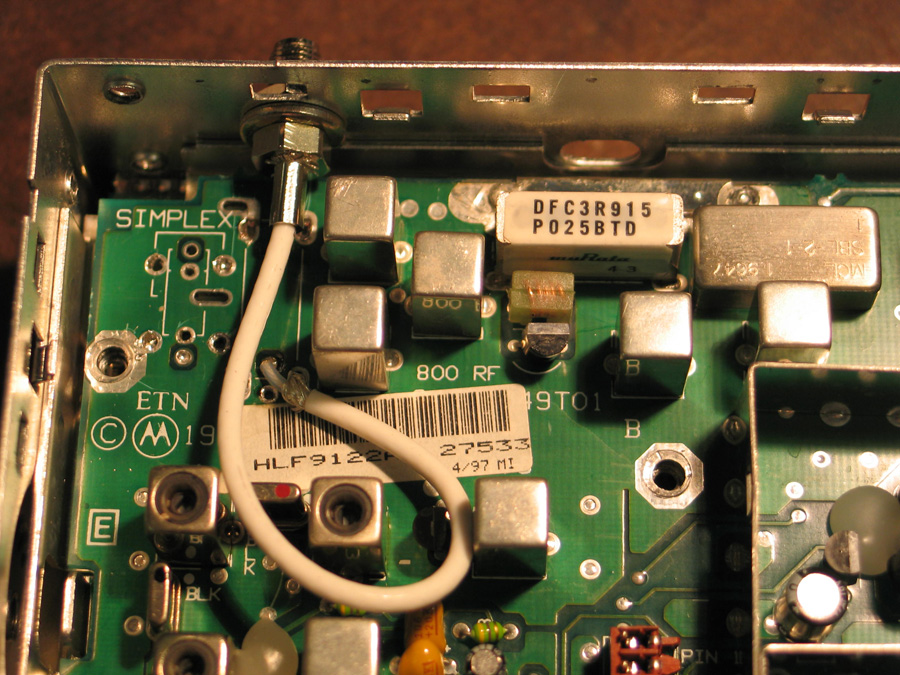
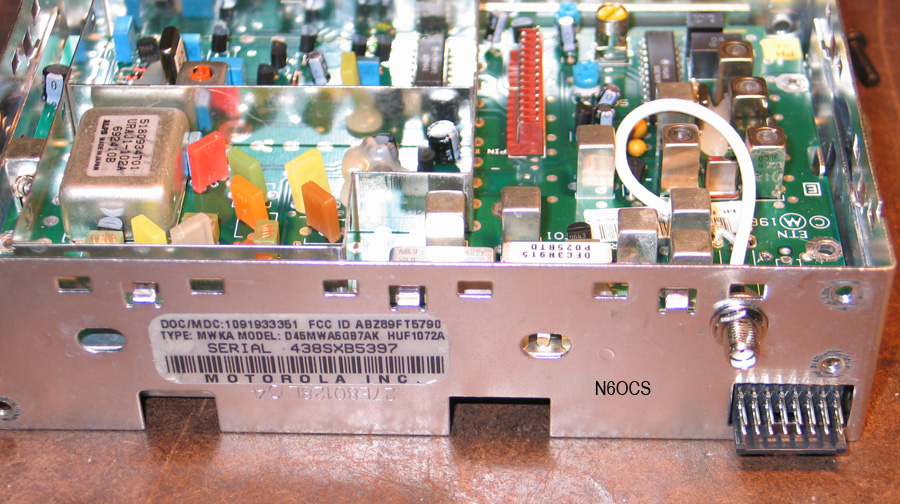
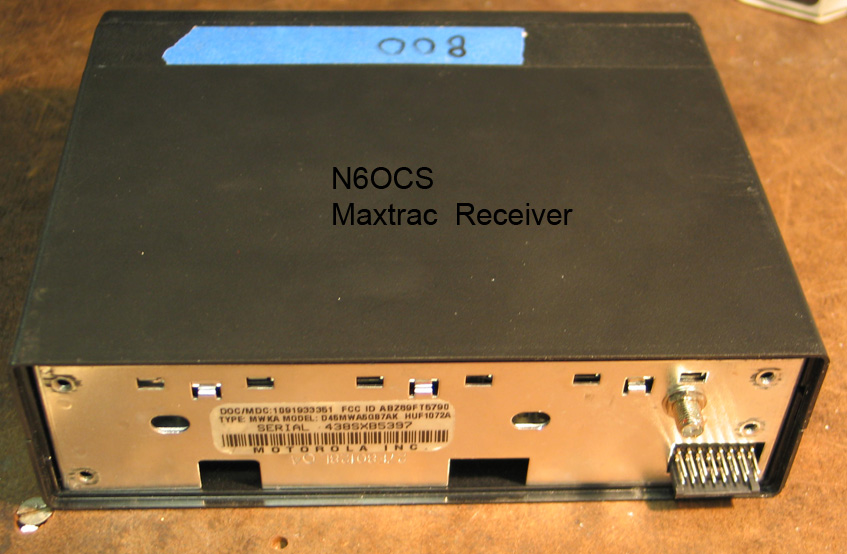
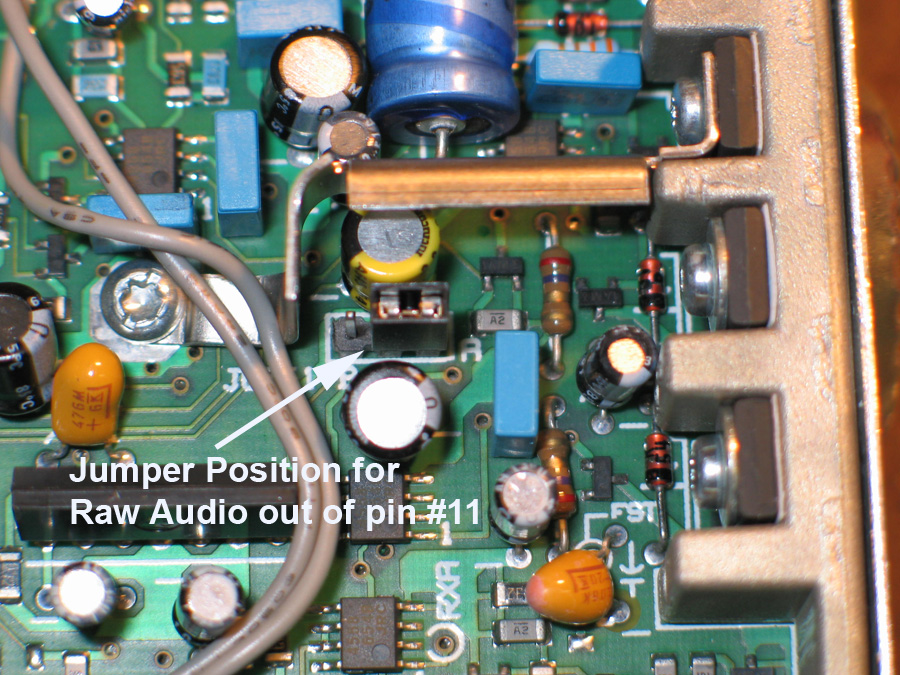
The other modification to the RF board requires disabling the VCO range-switching transistor, Q205. This will keep the radio in "talk-around" mode even while in receive. In "talk-around" the receiver will receive 902 MHz quite well. A simple solder bridge across the base and emitter does the trick and is reversible.
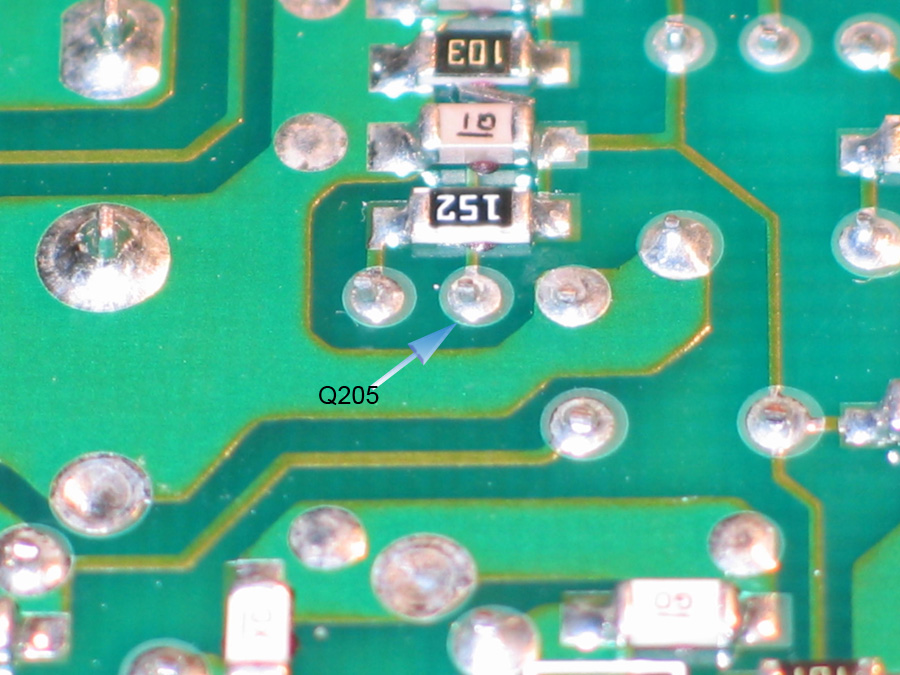
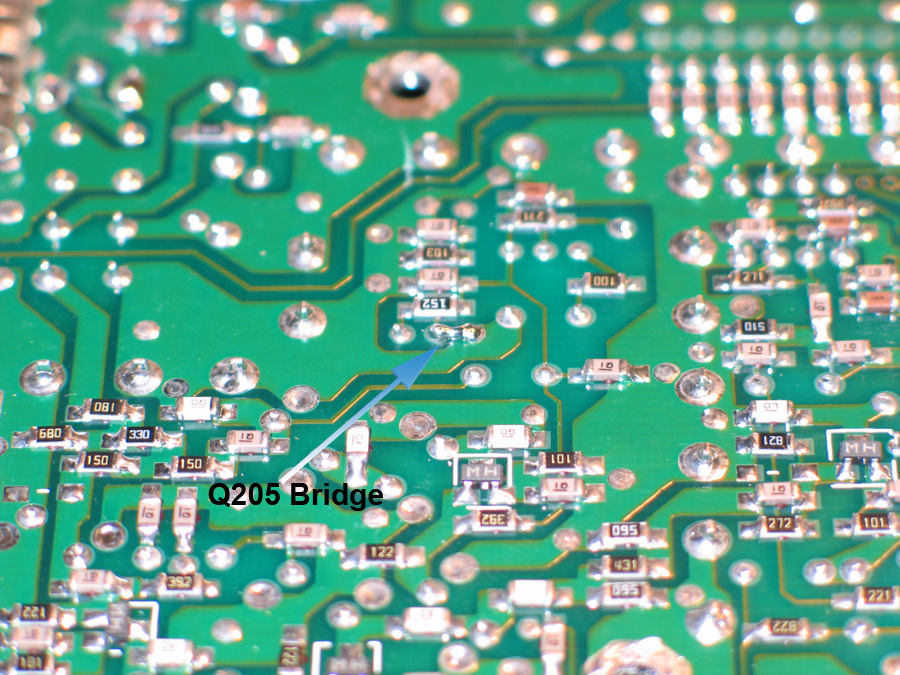
The last task was to make a clean mounting bracket to meld the Maxtrac into the Nucleus chassis. Since the Maxtrac does not use much power, it is powered from the Nuc's 12v supply.
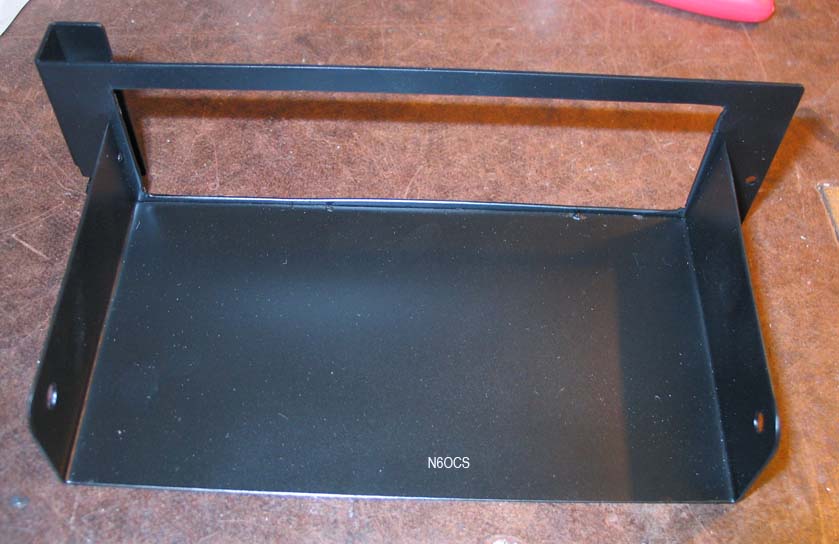
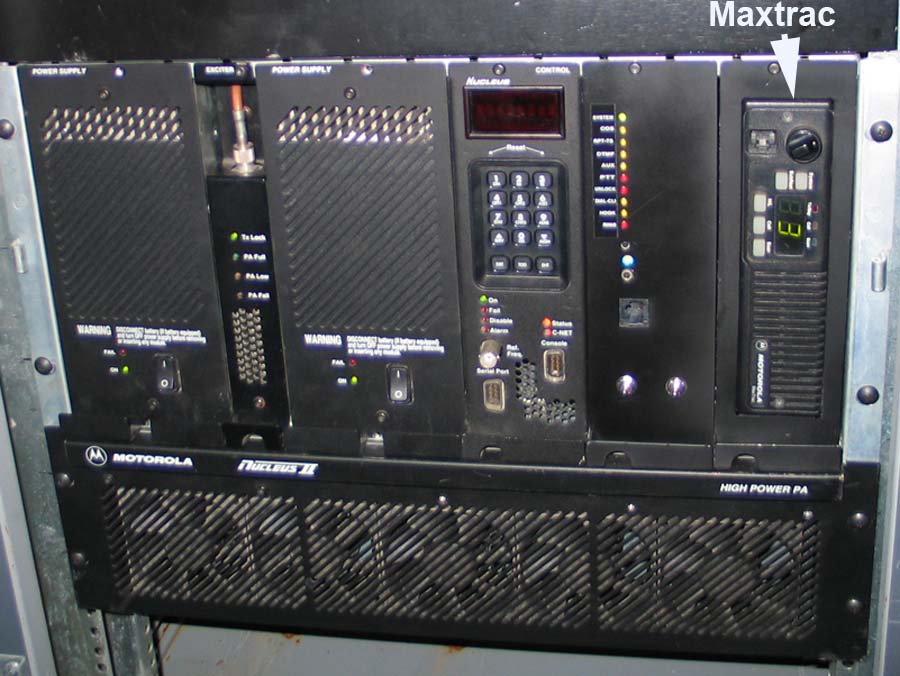
Below is the PHEMT LNA used on the receive side after the filter. Thank You! Chip Angle
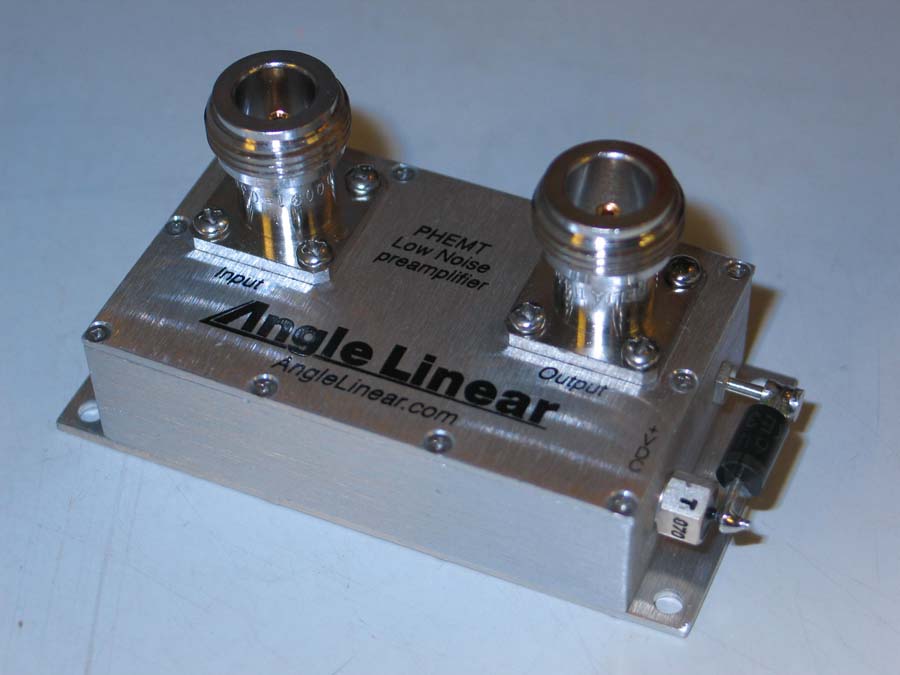
11-25-07
I am currently working on a Spectra Tac (aka Micor) receiver to replace the Maxtrac in hopes of better selectivity. The older Spectra Tac receiver has huge, tunable, helica resonators that I'm hoping will improve receive performance at the site.
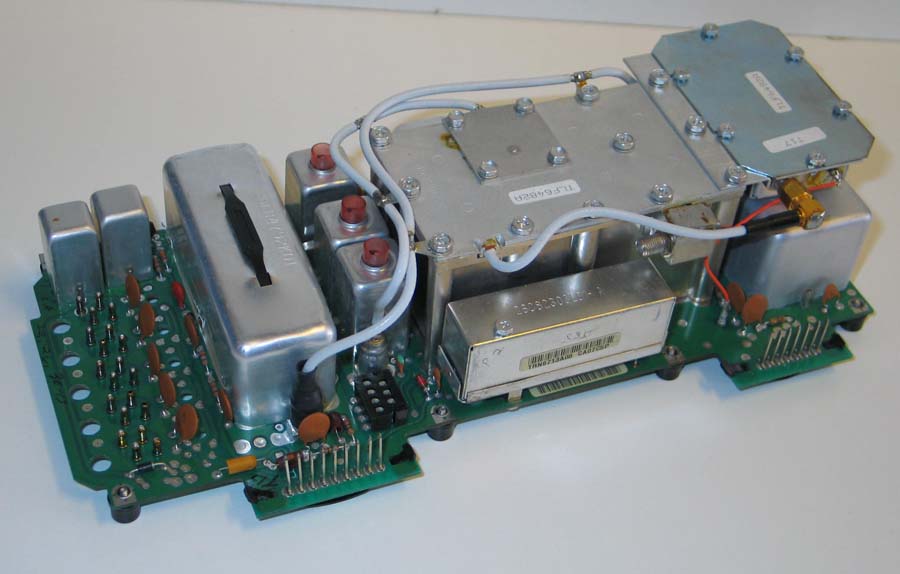
So far the results from the Spectra-Tac have not been stellar
12-25-08
In a never ending quest for a better receiver, I decided that the 5 KHz bandwidth of the 800 MHz Maxtrac was not the way to go, so I have modified a 900 MHx D27 Maxtrac. The 900 version is a 2.5 KHz band width radio which makes a whole lot more sense for a 2.5 KHz system. This required opening the VCO and retuning the striplines. I also found a couple of 908 MHz filters in some old vehicle location gear that were perfect replacments. These are a little closer the desired frequency then the 915's we have been using. Since the 900 Maxtrac has a tighter IF then the 800 D25 Maxtrac that was previously deployed the hope is that it will help with selectivity or at least intermod.
3-15-09
At the suggestion of WB6ZSU, I found some 3 pole IF filters that were even narrower than the ones supplied with the 900 Maxtrac. These weren't exactly a "drop in" but with some creativity they were coaxed into living on the Maxtrac 900 RF board. This modification netted about 3 dB SINAD. This was tested on a local "mule" repeater with great results including knocking out any adjacent channel interference and this receiver will be deployed at the Santiago site on the next trip up the hill.